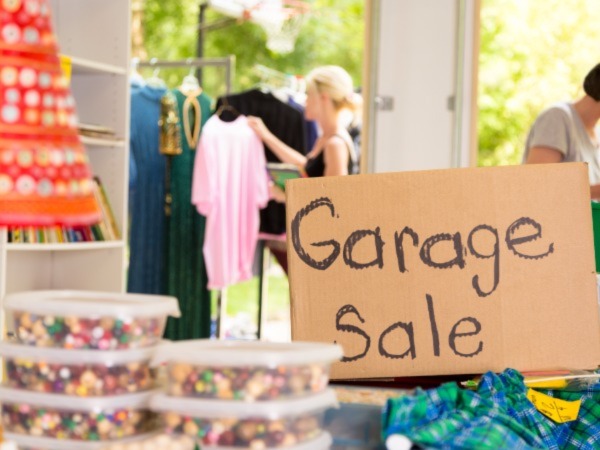
Ahhh…summertime. Family vacations, lounging by the pool, picnics with friends, and back-to-school shopping. Whatever summer shopping you are doing, there are things that you can do before, during, and after your shopping trip to reduce your waste, improve our environment, and save money, too.
1. Clean out your closets and cabinets and shop there first. If you’re shopping for housewares, garden supplies, or even food, you may learn that what you need is already sitting on your shelf! If you are sending a student off to college this fall, you may find that you have plenty of towels and sheets without buying new ones. If you’re sending a student back to school, you might discover unused notebooks, pens, and pencils or remember that last year’s backpack is in great shape.
2. Organize what you already own. We’ve all watched those organization (and hoarding) shows on TV. How many times have you watched someone find more than one coffee maker or enough white T-shirts or tank tops to clothe everyone on the block? While most of us aren’t quite that organizationally challenged, we often have some area—a junk drawer, a pantry shelf, or a bedroom closet—that could use some attention. When you organize what you have, you’ll find things you can still use. This is also a great way to find the stuff you no longer want that you could sell or give away.
3. No matter where you are shopping, plan ahead and make a list. Going to the hardware store? Make a list. Going to a clothing store? Make a list. We all know that we make fewer impulse purchases at the grocery store when we shop from a list—the same is true at other kinds of stores, as well.
4. Shop for reused items first. Before you hit the mall, check the neighborhood garage sales or stop by thrift stores or secondhand shops. You can find clothes, shoes, appliances, books, toys, games, office supplies, household goods, DVDs, and more.
5. Look for recycled-content products. Since it will soon be back-to-school season, paper is a great place to start. The average American uses about 500 pounds of paper each year. Recycled content notebooks, loose-leaf paper, and printer paper are readily available, high-quality, and cost-competitive. According to the Environmental Paper Network, making new paper from recycled paper uses 31% less energy and creates 53% less wastewater than making the same paper directly from trees. And don’t forget recycled-content tissues and paper towels. These items are often on school supply lists. You’ll be teaching a great lesson to the whole class by sending recycled-content tissues or paper towels to school.
6. Paper isn’t the only recycled-content product, of course! Look for pens, pencils, scissors, rulers, file folders, binders, storage containers, jewelry, and outerwear, such as fleece pullovers and scarves, to name just a few. If you don’t find recycled-content alternatives, tell the store manager that you want them. The store may be able to order them for you now or stock them in the future.
7. Select durable, reusable products that also reduce your waste or energy use at home. For example, if you have a drying rack, you won’t need to use your dryer as often. When you purchase electrical appliances or electronics, look for the Energy Star label, which guarantees an energy-efficient product. Choose reusables, such as refillable mugs and insulated cold cups. Many stores will refill your mug or cup— sometimes at a slightly discounted price.
8. Shop for food and flowers at farmers markets. These markets provide fresh food without extra transportation or excess packaging. Wouldn’t it be nice to enjoy fruits and vegetables without throwing away a lot of plastic bags and containers? Click here for more information about farmers markets or to locate them here or as you travel.
9. Say “no thanks” to overly packaged items. Ask yourself, “If I buy this item, how many layers of packaging are going to go straight into my recycling or trash?” If your answer is more than two, see whether an alternative product is available that has less packaging.
For more ideas, check out Reuse Puts Items to Good Use.
Photo credit: fstop123 | iStock | Getty Images Plus
